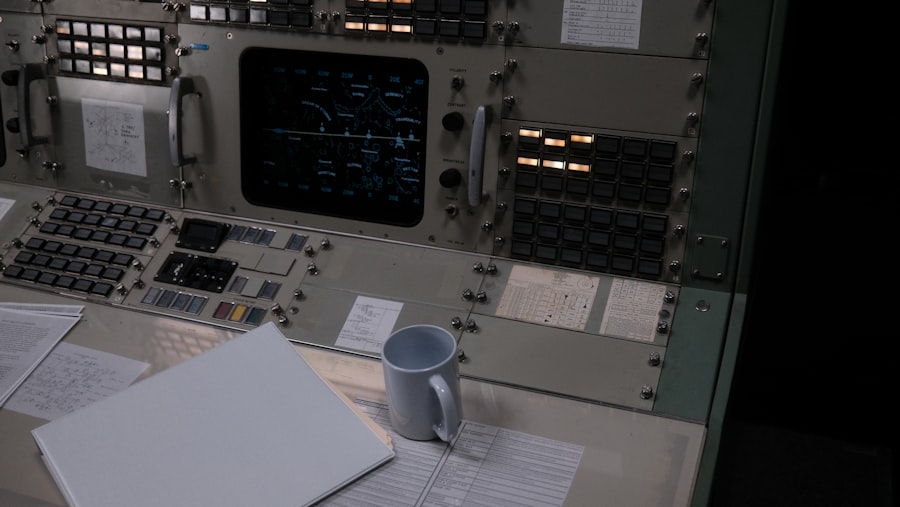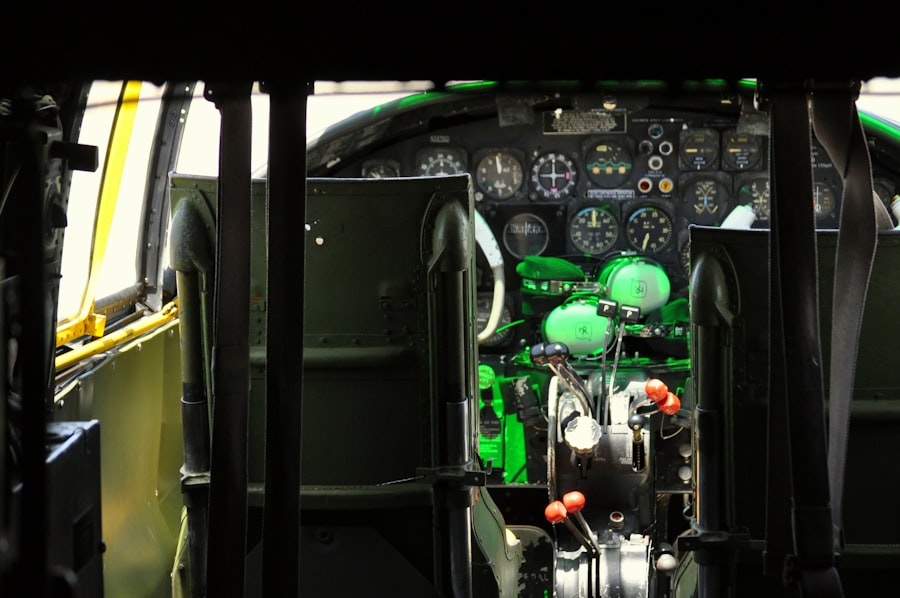Avionics engineering is a critical discipline within the aviation industry, encompassing the design, development, and maintenance of electronic systems used in aircraft. These systems include navigation, communication, and flight control technologies that are essential for the safe and efficient operation of modern aircraft. As aviation technology continues to evolve, the role of avionics engineers has become increasingly significant.
They are responsible for ensuring that these complex systems function seamlessly, contributing to the overall safety and reliability of air travel. The integration of advanced avionics systems has revolutionized how aircraft operate, allowing for greater precision in navigation and enhanced communication capabilities. The importance of avionics engineering extends beyond mere functionality; it plays a pivotal role in regulatory compliance and safety standards.
Aviation authorities around the world impose stringent regulations regarding the performance and reliability of avionics systems. Engineers in this field must stay abreast of these regulations and ensure that their designs meet or exceed industry standards. This responsibility not only safeguards passengers and crew but also enhances public confidence in air travel.
As the aviation industry continues to grow, the demand for skilled avionics engineers is expected to rise, making this field an essential component of the broader aerospace sector.
Key Takeaways
- Avionics engineering is crucial for the design, development, and integration of electronic systems in aircraft, enhancing aviation safety and efficiency.
- Becoming an avionics engineer requires specialized skills in electronics, software, and systems engineering, along with relevant qualifications.
- Avionics engineers play a key role in aircraft design by developing and integrating navigation, communication, and control systems.
- The field faces challenges such as system complexity and the need for continuous innovation to meet evolving aviation demands.
- Emerging technologies in avionics promise significant advancements, offering strong career growth and diverse opportunities for engineers.
The Skills and Qualifications Required to Become an Avionics Engineer
To embark on a career as an avionics engineer, individuals must possess a robust educational background, typically culminating in a bachelor’s degree in avionics engineering, electrical engineering, or a related field. This foundational education provides aspiring engineers with a comprehensive understanding of electronic systems, circuit design, and signal processing. In addition to formal education, hands-on experience through internships or co-op programs is invaluable.
Such experiences allow students to apply theoretical knowledge in real-world settings, gaining insights into the practical challenges faced by avionics engineers. Beyond educational qualifications, a successful avionics engineer must possess a diverse skill set that includes problem-solving abilities, analytical thinking, and attention to detail. Proficiency in software programming languages such as C++, Python, or Ada is often essential, as many avionics systems rely on sophisticated software for operation.
Furthermore, familiarity with industry-standard tools and technologies, such as simulation software and hardware-in-the-loop testing environments, is crucial for effective system design and testing. Strong communication skills are also vital, as avionics engineers frequently collaborate with multidisciplinary teams, including mechanical engineers, software developers, and regulatory bodies.
The Role of Avionics Engineer in Aircraft Design and Development

Avionics engineers play a multifaceted role in the design and development of aircraft, contributing their expertise at various stages of the process. During the initial design phase, they collaborate with other engineers to define the specifications for avionics systems based on the aircraft’s intended mission profile. This involves selecting appropriate technologies and components that will meet performance requirements while adhering to safety standards.
Engineers must also consider factors such as weight, power consumption, and redundancy to ensure that the avionics systems are both efficient and reliable. As the design progresses into prototyping and testing phases, avionics engineers are responsible for developing and implementing testing protocols to validate system performance. This includes conducting simulations to assess how avionics systems will behave under different operational scenarios.
Engineers must analyze data from these tests to identify any potential issues or areas for improvement. Their role extends beyond technical expertise; they must also document their findings and communicate results to stakeholders, ensuring that all parties are informed about the status of avionics systems throughout the development lifecycle.
The Integration of Avionics Systems in Modern Aircraft
| Metric | Description | Typical Value / Range | Impact on Aircraft Performance |
|---|---|---|---|
| System Integration Level | Degree to which avionics components are interconnected and operate as a unified system | High (70-90%) in modern aircraft | Improves reliability and reduces pilot workload |
| Data Bus Speed | Rate of data transfer between avionics modules | Up to 100 Mbps (e.g., ARINC 664/AFDX) | Enables real-time data sharing and faster system response |
| Number of Integrated Systems | Count of avionics subsystems integrated (navigation, communication, flight control, etc.) | 10-15 systems | Enhances situational awareness and operational efficiency |
| System Redundancy | Number of backup systems to ensure reliability | 2-3 redundant channels per critical system | Increases safety and fault tolerance |
| Weight Reduction | Weight saved by integrating avionics systems compared to legacy setups | 10-20% reduction | Improves fuel efficiency and payload capacity |
| Power Consumption | Electrical power used by integrated avionics systems | Reduced by 15-25% compared to older systems | Decreases overall aircraft power demand and heat generation |
| Mean Time Between Failures (MTBF) | Average operational time between system failures | 50,000 – 100,000 flight hours | Enhances operational availability and reduces maintenance costs |
| Latency | Delay in data processing and communication within avionics | Less than 10 milliseconds | Critical for real-time flight control and safety systems |
The integration of avionics systems into modern aircraft is a complex process that requires meticulous planning and execution. Avionics engineers must ensure that various systems—such as navigation, communication, and flight control—work harmoniously together. This integration often involves the use of standardized protocols and interfaces to facilitate communication between different systems.
For instance, the ARINC 429 protocol is commonly used for data transmission between avionics components in commercial aircraft. Engineers must be adept at understanding these standards to ensure compatibility and interoperability among systems. Moreover, modern aircraft increasingly rely on advanced technologies such as fly-by-wire systems and integrated modular avionics (IMA).
Fly-by-wire technology replaces traditional mechanical flight controls with electronic interfaces that enhance responsiveness and reduce pilot workload. IMA allows multiple functions to be consolidated into fewer hardware units, streamlining system architecture and reducing weight. Avionics engineers must navigate these advancements while maintaining rigorous safety standards.
They must also consider cybersecurity implications as aircraft become more connected; protecting sensitive data from potential threats is an essential aspect of modern avionics integration.
The Challenges and Responsibilities of Avionics Engineers
Avionics engineers face numerous challenges in their work, primarily due to the rapid pace of technological advancement in the aviation industry. Keeping up with emerging technologies requires continuous learning and adaptation. Engineers must stay informed about new developments in areas such as artificial intelligence, machine learning, and data analytics, which are increasingly being integrated into avionics systems.
This ongoing education is crucial not only for personal career growth but also for ensuring that their designs remain competitive and relevant. In addition to technological challenges, avionics engineers bear significant responsibilities regarding safety and compliance. They must conduct thorough risk assessments during the design process to identify potential hazards associated with avionics systems.
This involves implementing redundancy measures to mitigate risks and ensuring that all components meet stringent regulatory requirements. Furthermore, engineers are often involved in post-deployment activities such as troubleshooting and maintenance support. They must be prepared to address any issues that arise during an aircraft’s operational life, which can involve extensive collaboration with maintenance teams and operators.
The Future of Avionics Engineering and Emerging Technologies

The future of avionics engineering is poised for transformation as emerging technologies reshape the landscape of aviation. One significant trend is the increasing incorporation of artificial intelligence (AI) into avionics systems. AI can enhance decision-making processes by analyzing vast amounts of data in real-time, allowing for more efficient flight operations and improved situational awareness for pilots.
For instance, AI algorithms can assist in predictive maintenance by analyzing sensor data to forecast potential system failures before they occur. Another area of growth is the development of unmanned aerial vehicles (UAVs) and autonomous flight systems. As these technologies advance, avionics engineers will play a crucial role in designing systems that enable safe autonomous operations.
This includes developing sophisticated navigation algorithms that allow UAVs to operate in complex environments while avoiding obstacles and adhering to airspace regulations. The integration of advanced sensors such as LiDAR and computer vision will further enhance the capabilities of these systems, presenting new challenges and opportunities for avionics engineers.
The Impact of Avionics Engineering on Aviation Safety and Efficiency
Avionics engineering has a profound impact on aviation safety and efficiency by enabling more reliable communication, navigation, and control systems. Enhanced situational awareness provided by advanced avionics allows pilots to make informed decisions during critical phases of flight. For example, modern cockpit displays integrate data from multiple sources—such as weather radar, terrain databases, and traffic information—into a single interface, allowing pilots to assess their environment quickly and accurately.
Moreover, advancements in avionics have led to more efficient flight operations through improved fuel management systems and optimized flight paths. By utilizing real-time data analytics, airlines can adjust flight plans dynamically based on changing weather conditions or air traffic patterns. This not only reduces fuel consumption but also minimizes delays and enhances overall operational efficiency.
The cumulative effect of these advancements contributes significantly to reducing the environmental impact of aviation while maintaining high safety standards.
Career Opportunities and Growth Potential for Avionics Engineers
The career opportunities for avionics engineers are diverse and expanding as the aviation industry continues to grow. With increasing demand for skilled professionals in this field, engineers can find positions across various sectors including commercial aviation, military aerospace, space exploration, and unmanned systems development. Major aerospace companies such as Boeing, Lockheed Martin, and Airbus actively seek talented avionics engineers to contribute to their innovative projects.
In addition to traditional roles within established companies, there is also potential for entrepreneurship within the avionics sector. As new technologies emerge—such as electric propulsion systems or advanced UAVs—there are opportunities for engineers to develop niche products or services that address specific market needs. Furthermore, career advancement prospects are promising; experienced avionics engineers can move into leadership positions or specialize in areas such as system architecture or project management.
Continuous professional development through certifications or advanced degrees can further enhance career trajectories within this dynamic field.




